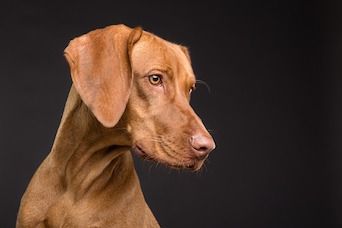Reducing Pneumonia Risk After Radiation Therapy
In a recent study, use of a modified anesthesia protocol decreased the incidence of pneumonia by 10-fold in canine patients.

In a recent study published in Veterinary Radiology and Ultrasound, researchers at Texas A&M University Veterinary Medical Teaching Hospital examined whether use of a modified anesthesia protocol reduced the incidence of pneumonia in patients undergoing repeated general anesthesia for radiation therapy. Modifications were chosen based on existing literature indicating risk factors for anesthesia-related pneumonia.
Methods
Data were retrieved retrospectively for canine patients treated at the hospital with standard and modified anesthesia protocols, the latter of which was implemented in 2014. Pneumonia cases were diagnosed via thoracic radiography by a board-certified radiologist within 1 week after radiation therapy.
For both the standard and modified anesthesia protocols, anesthesia was induced with intravenous (IV) propofol to effect and maintained with sevoflurane. Inhaled oxygen was provided until patients were breathing on their own for 5 minutes or pulse oximetry values exceeded 95%. All patients were administered IV lactated Ringer solution during anesthesia and were extubated once they began to chew or cough.
The standard premedication protocol included administration of glycopyrrolate plus hydromorphone and/or butorphanol. After protocol modifications, hydromorphone use was reduced or discontinued, and low doses of butorphanol were used only if needed. Anticholinergic drugs were also administered on an as-needed basis for patients with hypotension or cardiac complications. Antiemetics (maropitant and/or metoclopramide) were administered prophylactically to patients with signs of nausea, vomiting, or regurgitation.
RELATED:
- Anesthetic Complications in Dogs with Heart Disease
- AAFP Releases First Feline-Specific Anesthesia Guidelines
With the modified protocol, patients were placed in a head-up position during intubation and recovery. Personnel also emphasized aseptic handling of intubation equipment; for example, misdirected endotracheal tubes during intubation were discarded and replaced. The endotracheal tube cuff was inflated immediately after intubation and deflated immediately before tube removal.
Results
Medical records were retrieved for 146 dogs receiving the standard anesthesia protocol and 149 dogs receiving the modified protocol. Mean age and median body weight were 9.8 years and 25.5 kg, respectively, and most dogs were male. Underlying diseases that were potential risk factors for aspiration pneumonia included neurologic neoplasia (23% of dogs), respiratory disease (9%), and megaesophagus (1%).
Dogs received a median of 5 radiation treatments. Pneumonia was diagnosed in 13.7% of dogs receiving the standard anesthesia protocol, while the modified protocol reduced the rate of pneumonia to 1.3%. The authors found, regardless of anesthesia protocol, that pneumonia risk was highest in patients with neurologic tumors, respiratory disease, megaesophagus, or after an increased number of radiation treatments; however, age, body weight, and sex did not influence the frequency of pneumonia.
Clinical Impact
Modifications to an anesthesia protocol for radiation therapy decreased the rate of pneumonia by 10-fold in canine patients. Although the authors did not examine which component(s) of the protocol played the largest role in reducing pneumonia, they emphasized that their results may apply to patients undergoing repeated anesthetic procedures for various reasons, including daily wound care and handling of wildlife.
Dr. Stilwell received her DVM from Auburn University, followed by a MS in fisheries and aquatic sciences and a PhD in veterinary medical sciences from the University of Florida. She provides freelance medical writing and aquatic veterinary consulting services through her business, Seastar Communications and Consulting.